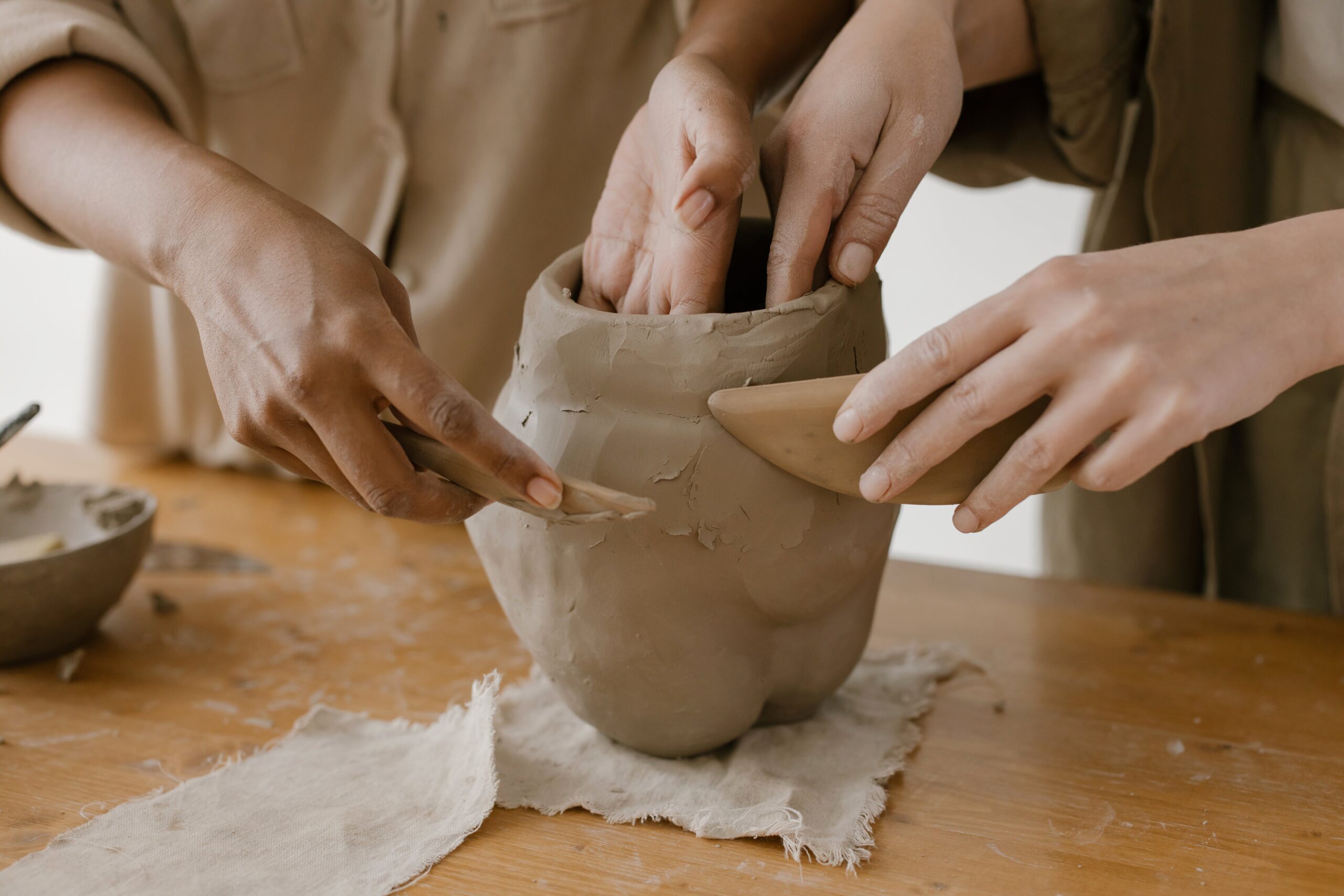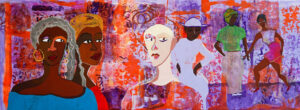Sculpture is a captivating form of artistic expression that allows you to bring your creative visions to life in three-dimensional form. Working with clay is one of the most accessible and rewarding ways to begin your journey into sculpting.
Whether you’re a beginner exploring this exciting medium or an artist looking to refine your skills, this guide will provide you with the essential knowledge and techniques to start sculpting with clay.
Choosing the Right Clay
Before you start sculpting, it’s crucial to select the right type of clay for your project. There are several types of clay commonly used in sculpture:
1. Water-Based Clay (Water Clay or Air-Dry Clay)
This clay is user-friendly and air-dries naturally, eliminating the need for firing in a kiln. It’s an excellent choice for beginners and for creating non-permanent sculptures. Keep in mind that water-based clay may not be as durable as fired clay.
2. Oil-Based Clay (Plasticine or Polymer Clay)
Oil-based clays remain soft and pliable, making them ideal for sculpting and modeling. They never dry out, which allows for ongoing adjustments and refinements. However, these sculptures can’t be fired and are generally not suitable for outdoor installations.
3. Fired Clay (Terracotta or Stoneware)
Fired clay is used in traditional ceramic sculpture. It’s fired in a kiln at high temperatures, making it durable and suitable for both indoor and outdoor use. Terracotta is a common choice for beginner ceramicists due to its relatively low firing temperature.
Essential Tools for Sculpting
To sculpt with clay effectively, you’ll need a few basic tools:
1. Sculpting Tools
Sculpting tools come in various shapes and sizes, including loop tools, wire-end tools, and ribbon tools. These tools help you shape, carve, and refine your clay sculpture.
2. Modeling Tools
Modeling tools are typically used for finer details and smoothing the surface. They come in a range of shapes, including needle tools, spatulas, and brushes.
3. Armature
Depending on the size and complexity of your sculpture, you may need an armature—a supportive framework made from wire or other materials. Armatures provide structural stability and prevent your sculpture from collapsing or cracking.
4. Clay Cutter or Knife
A clay cutter or knife is handy for cutting, slicing, and shaping clay.
5. Rolling Pin or Slab Roller
These tools help you flatten and shape clay for large surfaces or slabs.
6. Texture Tools
Texture tools, such as stamps, texture mats, and texture rollers, can add interesting surface details to your sculpture.
7. Clay Support
You’ll need a surface or stand to support your sculpture as you work on it.
Sculpting Techniques for Beginners
1. Preparation
Begin by kneading and conditioning your clay to make it pliable and free of air bubbles. If you’re using water-based clay, keep it moist by covering it with a damp cloth or plastic wrap when not in use.
2. Armature
If your sculpture is large or has a complex shape, create an armature to provide support. Attach the armature securely to a base or platform.
3. Building the Basic Form
Start with a rough, basic form that resembles your intended sculpture. Use your hands to mold and shape the clay, gradually building up the structure.
4. Additive and Reductive Sculpting
Sculptors use both additive and reductive techniques. Additive involves adding small pieces of clay to build up the form, while reductive involves removing excess clay to refine details. Experiment with both approaches to achieve your desired result.
5. Detailing
Use your sculpting and modeling tools to add details, textures, and features to your sculpture. Pay close attention to proportions, contours, and surface finish.
6. Textures
Experiment with various texture tools to create interesting surface textures and patterns. Texture can add depth and character to your sculpture.
7. Smoothing and Blending
Keep your sculpture’s surface smooth and free of cracks by blending and smoothing the clay. Wet your fingers or use a damp sponge to gently rub the surface and merge seams.
8. Drying
Allow your clay sculpture to dry slowly and evenly. Avoid exposing it to rapid temperature changes or direct sunlight, which can cause cracking.
Troubleshooting Common Issues
- Cracking
Cracks can occur if the clay dries too quickly or if the sculpture has uneven thickness. To prevent cracking, ensure slow, even drying and maintain consistent clay thickness.
- Collapsing
If your sculpture begins to sag or collapse, it may not have enough internal support from the armature. Consider reinforcing the armature or adding more structural clay.
- Drying Too Quickly
To prevent clay from drying too quickly, cover your work with plastic or damp cloths between sessions. You can also use a slow-drying clay if available.
Firing and Glazing (For Fired Clay)
If you’re working with fired clay, the final steps involve firing and glazing:
1. Bisque Firing
After your clay sculpture has air-dried completely, it’s ready for its first firing, called the bisque firing. This firing typically takes place in a kiln at a lower temperature (around 1800°F or 980°C) and removes the organic matter from the clay, making it more porous and ready to accept glaze.
2. Glazing
Once the bisque-fired sculpture has cooled, you can apply glaze. Glaze is a mixture of minerals and chemicals that, when fired again, creates a glassy surface. Glazing enhances the appearance and durability of your ceramic sculpture.
3. Glaze Firing
The final step involves firing the sculpture again, this time at a higher temperature (typically between 2000°F and 2400°F or 1100°C and 1300°C). This process vitrifies the clay, fusing it into a solid and durable ceramic material.
Water-Based and Oil-Based Clay Sculptures
For sculptures made with water-based clay (which doesn’t require firing) or oil-based clay (which remains pliable), the process ends with the completion of the sculpture. You can choose to paint or finish the sculpture with various materials if desired.
Painting and Finishing
To enhance the aesthetics of your clay sculpture, consider painting or finishing it:
1. Acrylic Paint
Water-based clay sculptures can be painted with acrylic paints once they are dry. Use a variety of brushes to apply colors, textures, and details.
2. Oil-Based Clay
If working with oil-based clay, you can create polished surfaces by rubbing the sculpture with a cloth or tool, which warms and smoothes the clay’s surface. No additional painting or finishing is necessary.
Conclusion
Sculpting with clay is a rewarding and versatile artistic endeavor that allows you to bring your creative ideas to life in three dimensions. Whether you’re a beginner or an experienced artist, working with clay provides endless opportunities for exploration and expression. By understanding the different types of clay, selecting the right tools, and mastering sculpting techniques, you can embark on a sculpting journey that unleashes your imagination and allows you to create beautiful and tactile works of art. So, gather your materials, find your inspiration, and start sculpting with clay today.



